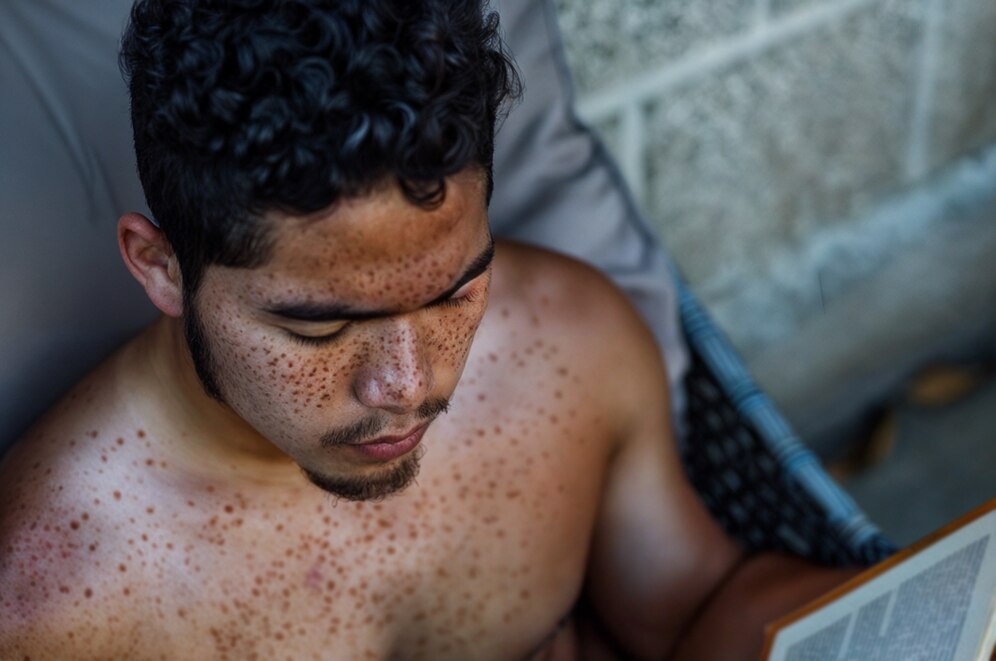Seborrhoeic Dermatitis
Our Services
Book an Appointment

Expert Seborrheic Dermatitis Care in Noida at Dermanation Clinic
At Dermanation Clinic in Noida, I, Dr. Rachna Singh, offer comprehensive strategies to manage seborrheic dermatitis. This common skin condition can manifest with symptoms like scalp irritation, flaking (dandruff), and redness on various areas of the skin. Effective management often involves specialized medicated shampoos containing ingredients such as ketoconazole, selenium sulfide, or pyrithione zinc to help control these symptoms on the scalp. For affected skin on the face and body, I may prescribe topical antifungal creams or ointments containing ketoconazole, along with anti-inflammatory agents like hydrocortisone or calcineurin inhibitors. In more persistent or severe cases, oral antifungal medications or a short course of corticosteroids might be considered. Emphasizing a gentle skincare approach with mild cleansers and suitable moisturizers is also crucial in soothing irritated skin and preventing further aggravation. Furthermore, identifying and minimizing potential triggers such as stress, harsh skincare products, and extreme environmental conditions can play a significant role in long-term symptom management.
Dermanation Clinic in Noida, under my guidance, is committed to providing expert and patient-focused seborrheic dermatitis treatment. I understand that this condition can impact your comfort and confidence, which is why I develop personalized treatment plans tailored to your specific needs and the severity of your symptoms. My approach integrates advanced dermatological knowledge with a compassionate understanding of your concerns. You can expect thorough care utilizing evidence-based therapies and the latest techniques to effectively manage your seborrheic dermatitis, promoting healthier skin and improved well-being.
Our Approach to Managing Seborrheic Dermatitis in Noida
Precise Diagnosis: I will conduct a thorough examination of your skin and discuss your specific symptoms to accurately diagnose seborrheic dermatitis. In some instances, a gentle skin scraping or biopsy might be necessary to rule out other potential skin conditions.
Targeted Topical Treatments: Often, the first line of management involves the application of specialized medicated creams, lotions, or shampoos directly to the affected skin. These formulations may contain antifungal agents to control yeast overgrowth, corticosteroids to reduce inflammation, or other therapeutic ingredients tailored to your condition.
Strategic Oral Medications: For more severe or widespread seborrheic dermatitis, or when topical treatments alone are insufficient, I may prescribe oral medications. These can include antifungal agents, short-term corticosteroids, or oral retinoids to achieve better control of the condition.
Phototherapy Considerations: In certain cases of seborrheic dermatitis, controlled exposure of the affected skin to specific wavelengths of ultraviolet (UV) light may be a beneficial treatment modality to help reduce inflammation and other symptoms.
Personalized Lifestyle Guidance and Home Care: I will provide you with recommendations for gentle skincare practices, including the selection of appropriate cleansers and moisturizers. Additionally, we will discuss strategies for identifying and minimizing your individual triggers, such as stress management techniques and adapting to environmental factors, to help manage your symptoms effectively.
Understanding the Factors Involved:
The exact cause of seborrheic dermatitis is not fully understood, but it is believed to involve a combination of several factors, including:
Emotional Stress
Genetic Predisposition
The presence of a specific type of yeast that naturally occurs on the skin.
Certain underlying medical conditions and the use of specific medications.
Exposure to cold and dry weather conditions.
It's important to note that seborrheic dermatitis is not caused by an allergic reaction or poor hygiene.
Seborrheic dermatitis can affect individuals of all ages, with a higher prevalence in newborns (cradle cap) and adults between 30 and 60 years of age. It tends to be more common in men and in individuals with oily skin types.
Recognizing the Symptoms:
Seborrheic dermatitis is commonly known as dandruff in adults and cradle cap in infants. Cradle cap typically presents as crusty, yellow or brown scales on the scalp of babies 3 months and younger. While it often resolves within the first year, it can sometimes recur during puberty.
In adults, seborrheic dermatitis can appear on the face, particularly around the nose, within the eyebrows, on the eyelids, or behind the ears. It can also affect other areas of the body, including:
The central part of the chest.
The area around the navel.
The buttocks.
Skin folds under the arms and on the legs.
The groin area.
Beneath the breasts.
In infants, seborrheic dermatitis in the diaper area might sometimes be mistaken for a diaper rash.
The affected skin may be itchy, feel like it's burning, or appear red. The flaking scales can be white or yellowish in color and may have a moist or oily appearance.
Given that seborrheic dermatitis can resemble other skin conditions, it's essential to consult with me at Dermanation Clinic in Noida for an accurate diagnosis and the most appropriate treatment plan. During your consultation, I will review your medical history and carefully examine your skin. Further tests may be recommended if there's a suspicion of an underlying medical condition contributing to your symptoms.
Review Form

Dr. Rachna Singh is a Dermatologist and Cosmetologist with 16 years of experience in clinical dermatology, hydra facials, pigmentation treatments, mole & wart removal. She practices at Dermanation Clinic, Sector 75, Noida.
- Home |
- About Us |
- Treatment |
- Contact Us |
Shop no - 18A first floor, spectrum mall, Dermanation clinic, Sector 75, Noida, Uttar Pradesh 201304
Mobile No: +91 093194 54789
Email: rachansingh8@gmail.com
Website: www.dermanation.in


